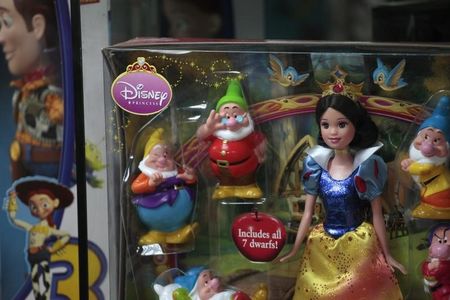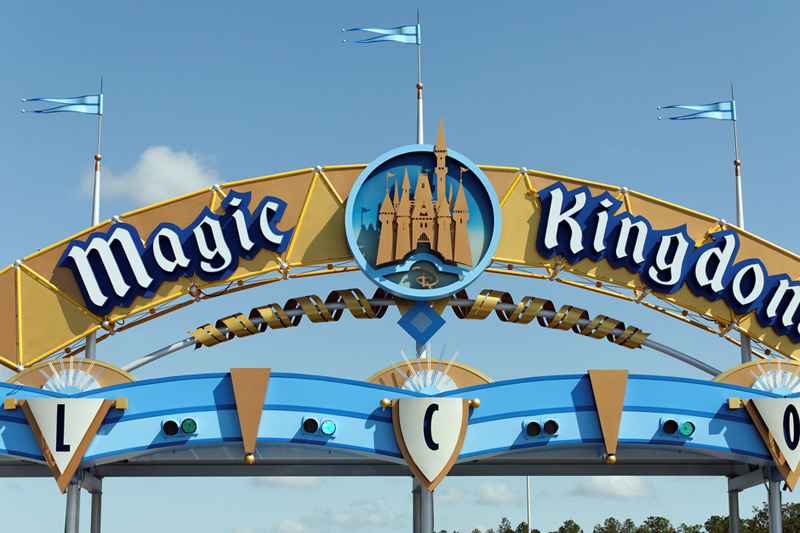By Lisa Richwine and Ronald Grover
(Reuters) - Shoppers entering a Walt Disney Co (N:DIS) retail store these days can see company CEO Bob Iger's franchise strategy on display: walls packed with products linked to the company's famous characters, ranging from Mickey and Minnie to "Guardians of the Galaxy," Iron Man and Doc McStuffins.
Ten years after being sold off and six years after Disney bought them back, Disney's 336 retail stores have helped make its consumer products division among the fastest-growing of the media company's five segments. In the quarter that ended in June, the unit earned $273 million (162.1911 British pound), a 25 percent increase from a year ago. It was the unit's fourth consecutive quarter of double-digit earnings growth, Iger said when the company announced its results on Tuesday.
Iger's franchise strategy focuses on making larger-budget films like "Maleficent" that stand out in a crowd. Three years ago, he dispatched Bob Chapek, a veteran of the movie studio, to run the consumer products division, where he's done much the same thing. Chapek organised the unit around franchises, rather than categories such as footwear or lunch boxes.
"Consumers know that their children love a specific Disney franchise, whether it be Doc McStuffins, Frozen, or Minnie Mouse," Chapek said. Parents think "I want to buy Doc McStuffins," he said, before considering the type of product.
Iger's franchise strategy is the reason that over the past eight years the company paid $15 billion to buy Pixar, Marvel and George Lucas' Lucasfilm "Star Wars" factory. Iger directed the company's movie studio to focus on fewer films built around franchises.
Part of Chapek's work at consumer products, which operates the Disney stores and licenses characters, is building on existing franchises.
The company worked with licensee Hasbro (N:HAS) to create 12-inch-tall Titan Heroes, from its "Avengers" line of figures, after research by Hasbro in Latin America showed customers wanted bigger toys.
"People who wouldn't otherwise be buying into the action figure category are now buying," Hasbro Chief Executive Brian Goldner said.
The consumer products unit will be Disney's fastest-growing segment over the next five years, said Bernstein Research analyst Todd Juenger, who predicts earnings will grow at 13 percent compounded annual growth rate through fiscal 2018.
New ideas from consumer-product staff include international dolls from Disney's "It's a Small World" ride and selling furry Tsum Tsum characters from a Disney video game.
Chapek's strategy involves some risk-taking, said Stephen Berman, chief executive of Disney licensee Jakks Pacific. For Doc McStuffins, toys were in the market four months after the TV premiere, rather than waiting the typical 18 months to see if it was a hit. The bet was right on.
Sales of Doc McStuffins toys helped retail sales for the Disney Junior preschool business double to $1.9 billion in fiscal 2013.
"He's taking a risk, but it's a calculated risk," Berman said. "Who could have figured McStuffins would be as big as it's become?"

The unit also is creating new franchises from book publishing. In May, it released the first in the "Deep Blue" mermaid series along with a song and music videos. In January it will launch "The Zodiac Legacy" thriller series from Marvel Comics creator Stan Lee.
Not every Disney product is a mega-hit in toyland. Sales of products related to 2011 film "Cars 2" were big, but not as high as licensees expected, said Needham & Co analyst Sean McGowan. While its wide range of hot-selling toys is impressive, "not all of them work that well," he said.
(Reporting by Ronald Grover; Editing by John Pickering)
